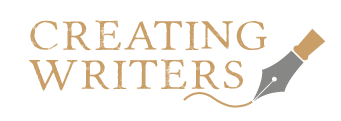Charlie Laidlaw is an author and tutor at Creating Writers
Many people confuse “plot” and “story.”
However, “plot” is the sequence of events that comprise the story. “Story” is what the novel is about, and novels can have multiple storylines. For example, a novel can have several characters, each with their own intertwined storylines.
Seen in that context, the same story can – and is – created repeatedly. After all, there is nothing under the sun that hasn’t been written about many times.
All you can do as a writer is return to a familiar story – whether, for example, it’s betrayal and redemption, love and second chances.
The trick is to have a new perspective on those age-old themes, and to then weave a plot around the story.
A good example is one of the best-known plots of all time: The Gunpowder Plot. We all know the plot: Fawkes and his co-conspirators conspire to blow up parliament.
However, if you were writing about it, your book might have disparate storylines covering each of the main conspirators. Perhaps also, how the king’s men were on their trail.
Style
Overall, your story should also have two things built in: elegance and efficiency. The plot should be clever and captivating, but it shouldn’t waffle or endlessly meander.
It should have rhythm and style. Also, it should have periods of rising tension or action, and periods of calm reflection.
It can be a good idea to map out your story on a piece of paper. That way you can better see rises and falls in tension and how they add to story and character development.
Start by mapping out the overall story: Gary meets Jane, Gary falls in love with her, then he makes a fool of himself. He moves to a distant city, marries someone else…then meets Jane years later in a supermarket….
Once you have the overall story written down, try to write it down chapter by chapter. Keep in mind periods of rising and falling tension, and balance periods of high emotion with something quieter.
Some writers go further and story-board their books to help them visualise structure. Here’s some excellent advice from author Jo Knowles who does just that.
But if you need some help to get started, speak to us.
Creating Writers has two creative writing courses, an introductory course and our flagship Diploma course – with a real qualification at the end of it.
Few people are born writers. It’s a skill most of us have to learn.
For more information, you can contact us here.
Photo by Tom Hermans on Unsplash

